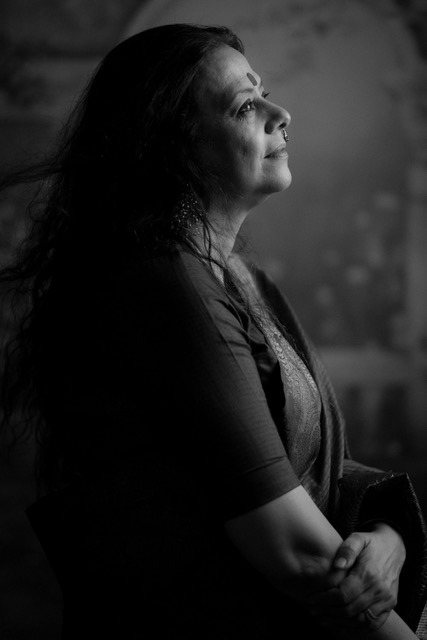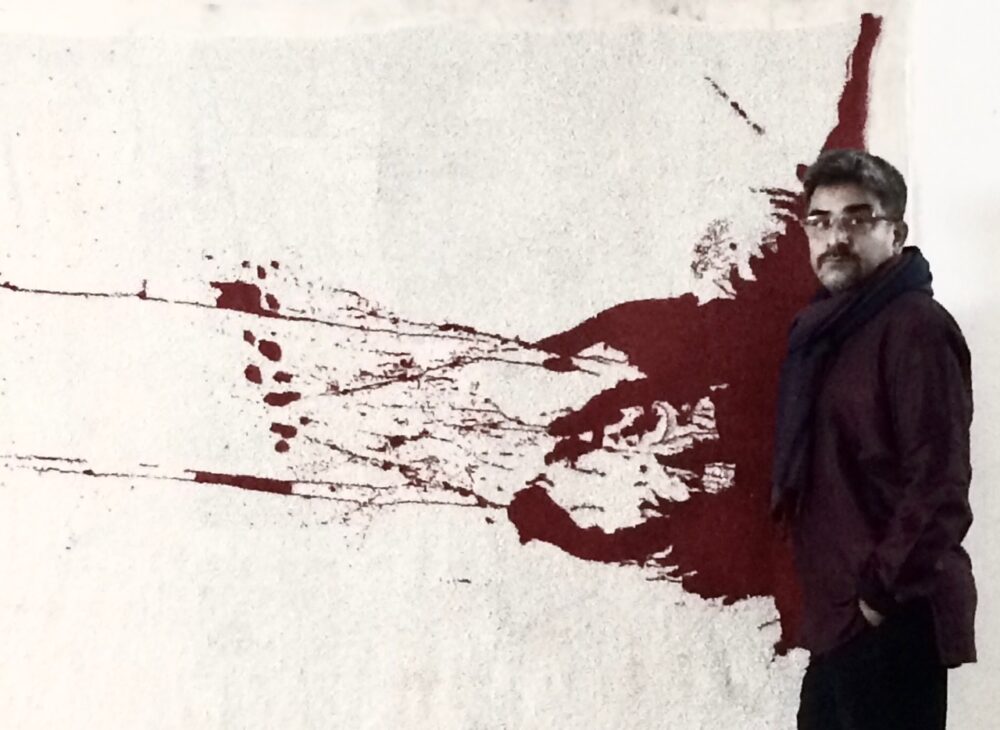After graduating from Savannah College of Art and Design (SCAD) in Georgia and working at Hirsch Bedner Associates in Los Angeles, Jenny Majmudar made the pivotal decision to return to her roots in India. Her journey mirrors the homecoming narrative of the film “Swades,” as she reconnected with her heritage to forge a new creative path.
At her studio Bēsō, Majmudar collaborates closely with local artisans, creating contemporary furniture that honors handcrafted traditions. Her work brings together preservation and innovation, bringing time-honoured techniques into modern spaces.
Bēsō has become a platform for artisans, providing them opportunities to apply generations-old skills to designs that resonate in today’s market. Her vision and execution have earned recognition throughout India, including the Pataki Award for Best Product Designer in 2023 and the Elev8 Award for Best Product Design Studio in 2025.
As Majmudar continues to build Bēsō’s legacy, she joins DTalks to share her experience and philosophy of design.
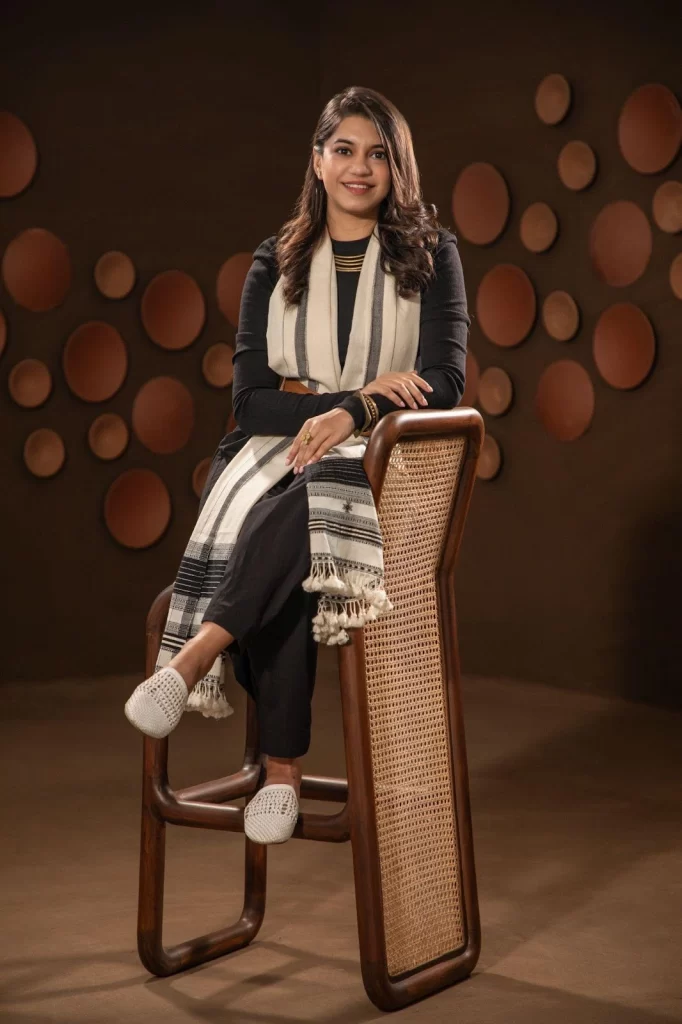
Q. How would you describe your signature design aesthetic, and how has it evolved while working in India?
Jenny Majmudar: The evolutionary process of me as a designer is always in a state of continuum. However, my design aesthetic can be classified as modern and contemporary yet distinctly Indian. I went to SCAD, in the United States of America, where I was exposed to ideas, design philosophies, and aesthetics that informed my academic career. Upon graduating, I worked at HBA, which predominantly focused on a typically Western modern aesthetic and design. Having grown up in India and having been exposed to a plethora of Indian art forms that have penetrated my cognitive machinery, I realized that the Modern Western aesthetic reigns supreme, but my design sensibilities were informed by an overwhelming sense of nostalgia. I somehow wanted to anchor my identity as an Indian with my disposition as a designer, I wanted to blur those lines and singularise this duality. When I flew back to India (this time for good), I began the journey towards achieving this non-duality, and in that process, Bēsō was born. To surmise my evolution as a designer, I can proudly admit that it was an exercise that I undertook to reclaim my Indian identity while not divorcing it from the global and Western pedagogical and professional exposure that I was privileged to have.
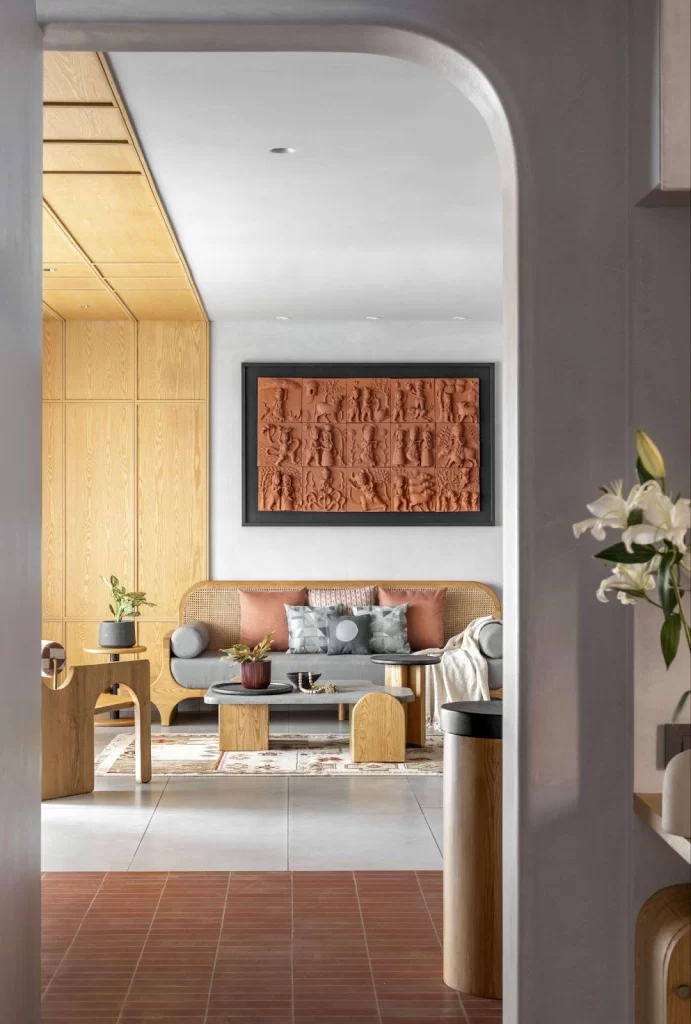
Q. What influences and inspires your current work? Could you share some movements, designers, or elements of Indian culture that have shaped your practice?
Jenny Majmudar: The convergence of form and function, and not their divergence, inspires my current work. My work is a testament to the great design movements like the ‘Bauhaus’ Movement, the ‘Indian Art Renaissance’, and of course, the ‘Danish Modern’ Movement. My work is a humble attempt to synthesise the values and principles of the Titans who were responsible for each of these movements. After all, we do stand proud and tall on the shoulders of giants.
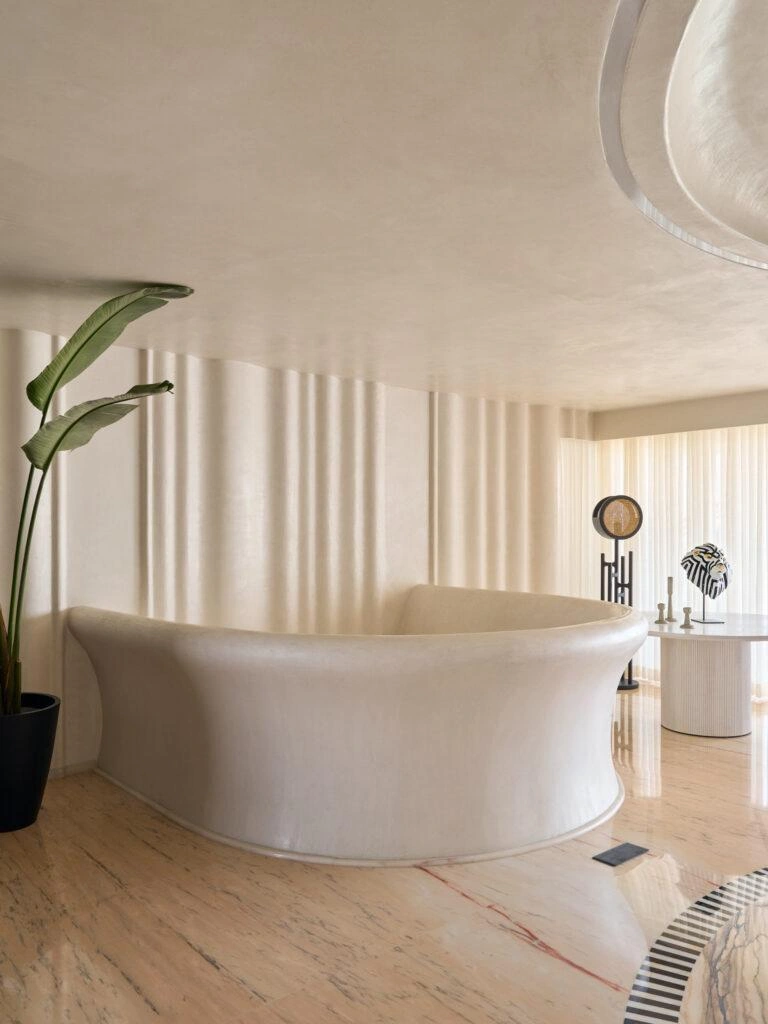
Q. Could you walk us through your creative process? How do you move from initial concept to final execution?
Jenny Majmudar: My creative process is quite rudimentary – it starts with scribbles and doodles on paper, and then it goes through a process of refinement till something more realistic and practical emerges from the creative and abstract cesspool, thereafter physical wireframe models are made of these forms, after a lot of tinkering and inescapable frustration something achievable does break into the horizon, like a new dawn.
The transition from initial concept to final execution at times moves at a snail’s pace, and at times, it moves through phases in quick succession if there is a breakthrough concept that hits like a lightning bolt.
Q. Your work often involves collaborations with artisans and other creatives. What draws you to these partnerships, and how do these collaborations enrich your design practice?
Jenny Majmudar: With utmost sincerity, the true currency of an artist is collaboration; collaboration not only brings in creative disruptions but also helps in understanding how to build synergies and work with people of different moods and temperaments. I like to think of collaborations as symphonies, where a multitude of voices, thoughts and ideas come together to form a syncretic whole.
I am drawn to these partnerships because partnering and collaborating with people is the greatest form of investment one artist can ever make, it not only aids creative growth but personal growth as well, on a deeper level.
Q. Looking back at your portfolio, which project represents a significant turning point in your career, and among your recent works, what project are you most proud of and why?
Jenny Majmudar: For anybody, their first project is held and remembered quite dearly; for me, each project of mine reserves a special place in my heart. But the most trying of all projects was when we made and custom-designed furniture for a house in Houston, one 40-foot and one 20-foot container were needed to ship the furniture to Houston, Texas. I do accept humbly that we are a young upstart brand and it was nothing short of a miracle to export furniture so early on in our career, but grappling with design customisation with the client with the time difference, trying exceedingly hard to understand the logistics and export processes and the myriad bureaucratic procedures therewith, while adhering to a strict timeline, really taught my team and I a wide range of things, ranging from the nitty gritty of project management at this scale, the art of negotiation and how to cater to an audience residing in a foreign land. We are wiser and aware because of this project.
Q. What unique challenges and opportunities have you encountered as an emerging designer in the Indian design industry, and how are you working to overcome these obstacles?
Jenny Majmudar: I say this with a profound affection for my country – in India, problems and challenges are plentiful, and navigating through these challenges and crossing these hurdles is quite enriching; it is a trial by fire, but out of the hottest fire comes the strongest steel. But the presence of the said challenges and obstacles also spawns a lot of opportunities and brilliance; it is characteristic of brilliance to grab these opportunities. My journey as a designer became more holistic after I journeyed back home in search of opportunities where I could perhaps prove my mettle as a designer, and it has served me well. Getting on that plane back to India was the greatest gift that I could have given myself.
“Take one day at a time” is something that is often said but is seldom heard. I have started believing in this, if not fully, then at least partially, and this has been of tremendous help while coping with a host of problems and challenges that are synonymous with the life of a designer.
Q. How do you approach sustainability and eco-friendly practices in your designs, particularly considering India’s traditional wisdom and contemporary environmental challenges?
Jenny Majmudar: I would not like to go on a sermon concerning my approach to sustainability and eco-friendly practices in design, so I’ll keep it short. As far as my approach is concerned, employing more craftsmanship, a direct corollary of India’s ancient wisdom as far as working with hands is concerned vis-à-vis industrial tools and machines, lends a sustainable halo to any practice. As far as the materiality is concerned, there are a lot of brands that are eco-certified and make environmentally friendly products. With the growing awareness of environmentalism and sustainability, a lot of these products are entering the market that can help design practices become more sustainable, they should be embraced.
Q. What’s your most exciting recent design or art discovery that’s influencing your current thinking?
Jenny Majmudar: Currently I am more drawn to Indian Mythology; aesthetically and otherwise. They are a treasure trove of wisdom, as we grow older we have a more nuanced understanding of the world, and mythologies act as perfect allegories for life in all its shades. We are currently working on a collection that tries to capture a sliver of the nuance that lies in abundance in our mythological stories and tales – simple, yet so divine.
Q. How do you build visibility and reach out to potential clients? What platforms and strategies have worked best for you?
Jenny Majmudar: In all honesty, without resorting to exaggeration, I would like to admit that Bēsō as a brand has never harnessed or harvested the power of Social Media, digital or growth marketing. Whatever business that we have been fortunate to get has been through organic means in the truest sense. Clients and patrons or just visitors who have been happy with our work have been generous enough to refer us to newer audiences.
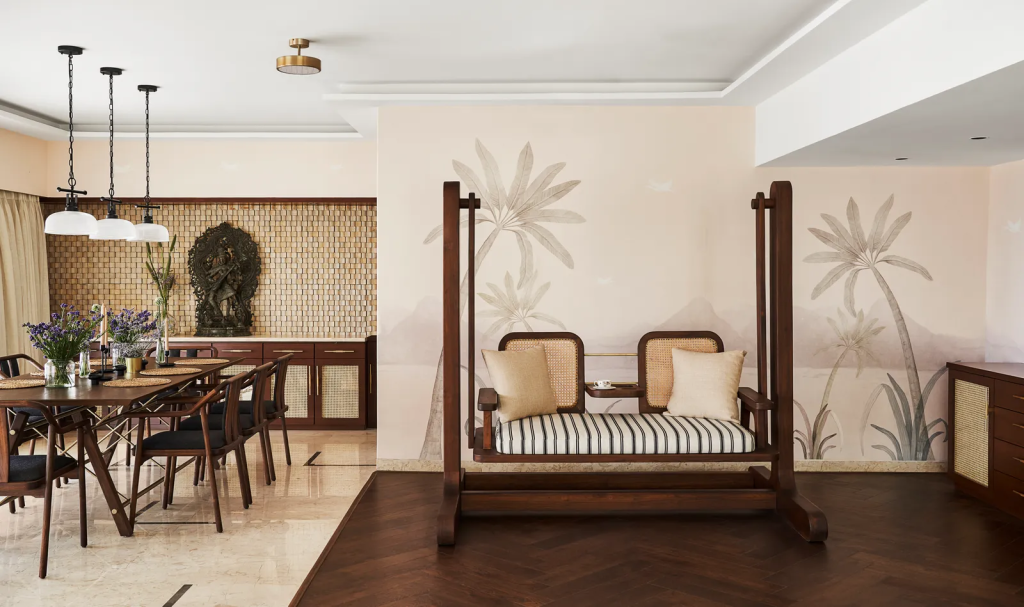
Q. From your experience, what are the crucial dos and don’ts for young designers trying to establish themselves in India, and what professional forums or communities would you recommend they join?
Jenny Majmudar: Dos:
a. Embrace the design fraternity; we have to look out for each other.
b. The power of collaboration shall offer boundless leverage, and be more participative and open to working with people.
c. Follow your hunch and start paying heed to your ‘gut-feeling’ more often than not our greatest breakthroughs are driven by intuition.
d. Cut through the clutter; we are drowned in noise.
Dont’s:
a. Don’t be too afraid to take the first step, the plunge induces anxiety initially but the gains thereafter are exponential.
b. Refrain from being cagey with regard to ideas and thoughts, the world is your oyster, but the oyster lies on the ocean sharing it with a million others.
c. Don’t run away from sound advice while being on an ego trip or fallacious pride. Be open and receptive, absorb what you have to – there are nuggets of wisdom in what would seem like an idiotic advice from an industry veteran or a contemporary.
Q. As you look ahead, what kind of projects or directions would you like to explore?
Jenny Majmudar: Projects are made interesting by the designers who work on them, I look forward to working with a range of designers in making projects more interesting. Designers are fundamentally problem solvers, a project is a problem waiting to be solved which makes every project interesting, in my opinion.
Q. For aspiring designers looking to make their mark in India’s design landscape, what wisdom would you share from your journey?
Jenny Majmudar: I have yet to become wise enough to even pretend to share wisdom with anybody. But I can sincerely say that we stand at the crossroads of an interesting time in History, as Oscar Wilde would put it “these are the best of times and the worst of times..” it is a riveting era to live in, there is a constant churn of new and radical ideas, just be cognizant of that, ponder over and work on it, and something significant will truly come out of it.
Pool Lounger: Vishranti. Courtesy of Bēsō
Contributor




